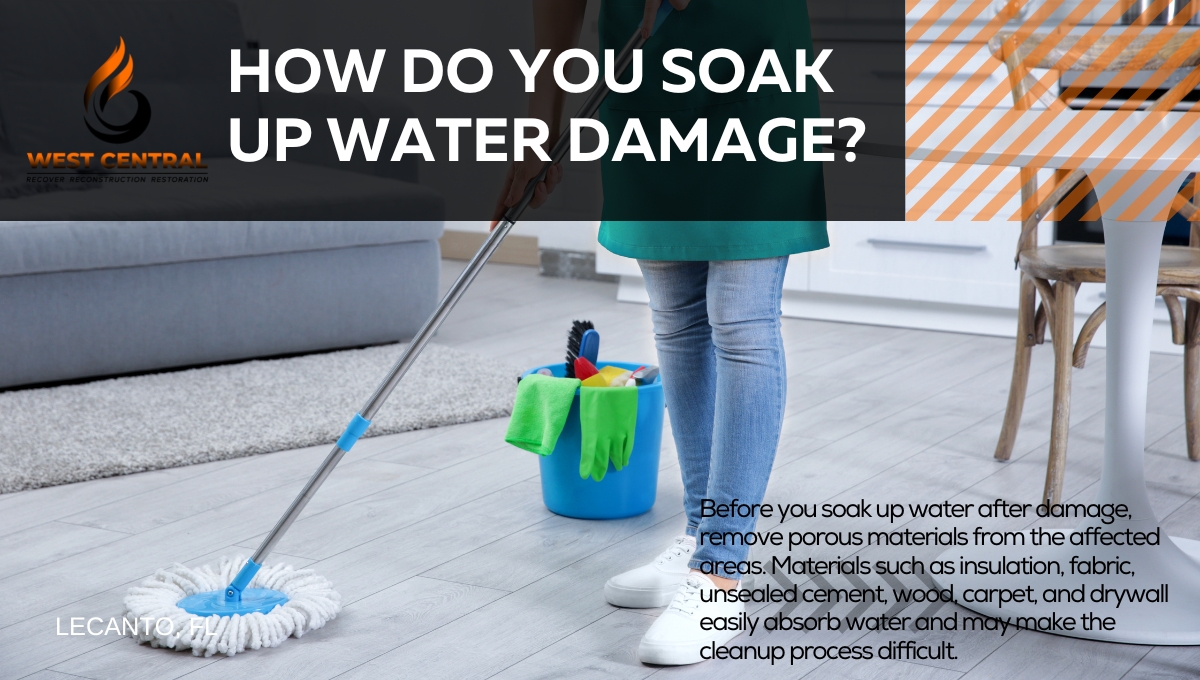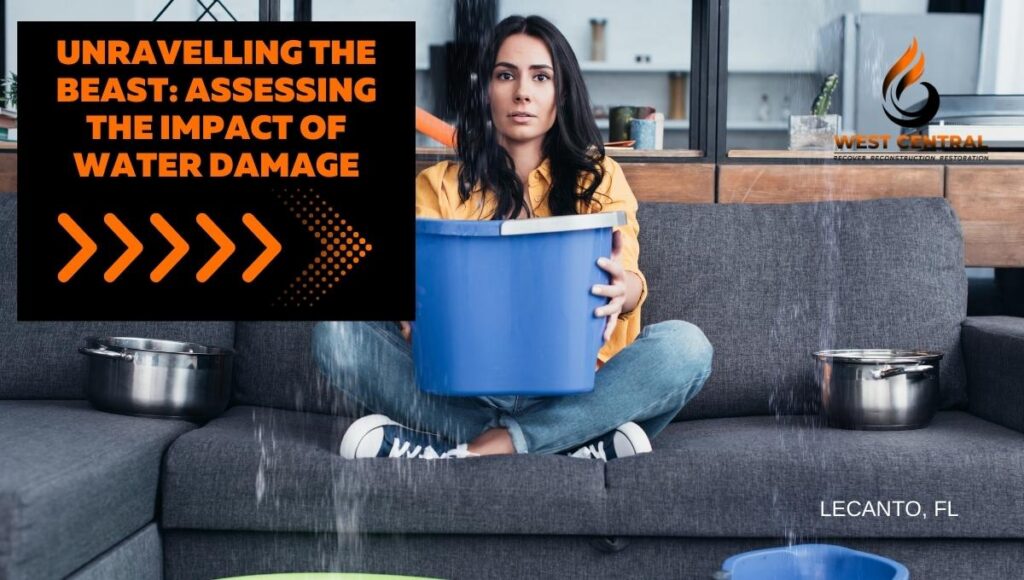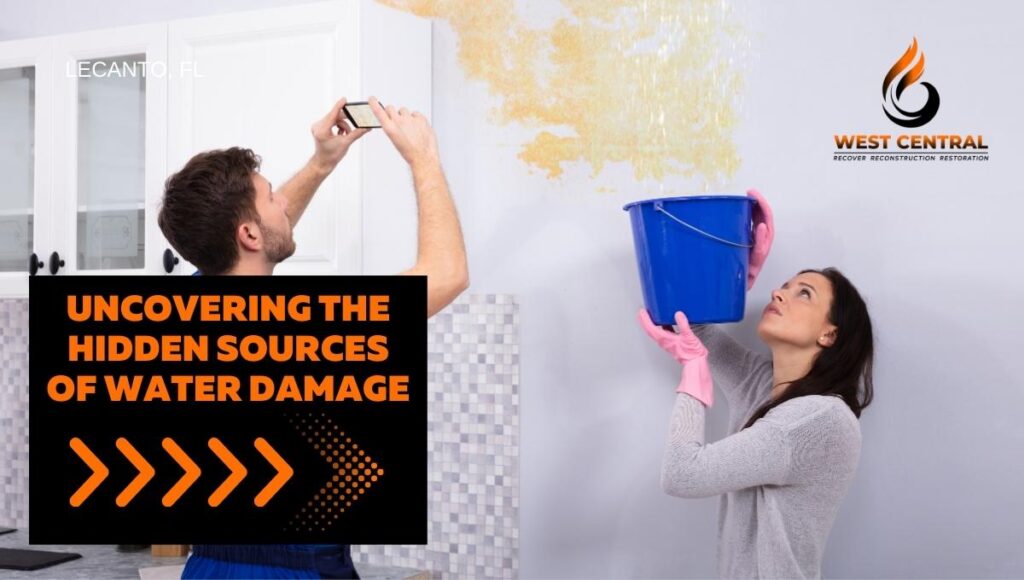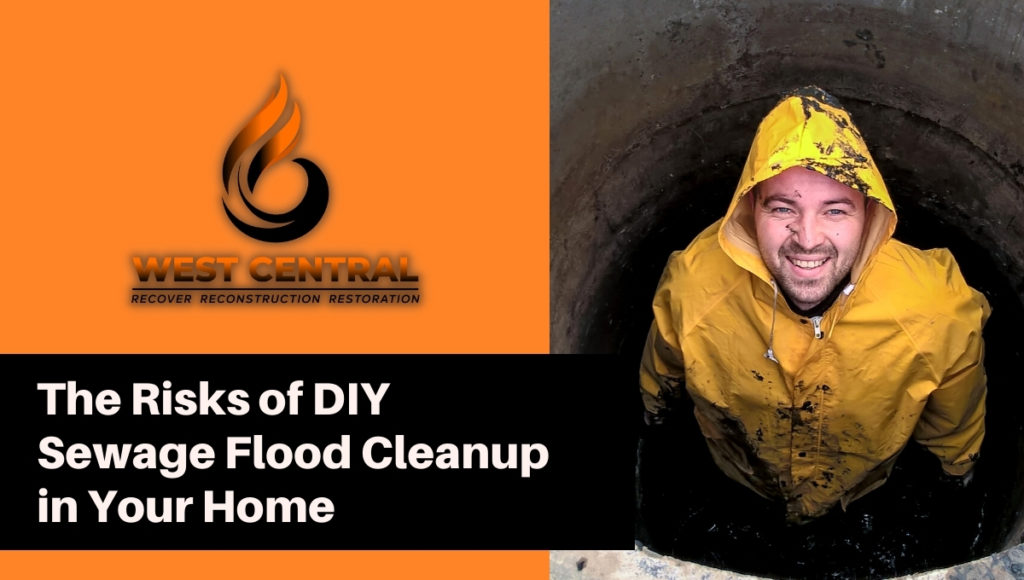 When addressing water damage, it’s critical that you should not allow water to stand in your home. The longer the water stands, the more damage it can potentially cause to the floors, walls, cabinets, and personal belongings. What’s more, mold and rust are significantly more likely to occur if water damage is not tackled quickly and directly.
When addressing water damage, it’s critical that you should not allow water to stand in your home. The longer the water stands, the more damage it can potentially cause to the floors, walls, cabinets, and personal belongings. What’s more, mold and rust are significantly more likely to occur if water damage is not tackled quickly and directly.
So after identifying water damage, always seek to soak up the water swiftly to mitigate further damage and protect your possessions. Quickly drying out the affected areas prevents moisture from spreading, enables you to salvage many precious items, and makes the restoration job easier.
Type of water involved?
Before you can soak up water and dry out affected areas, know the type of water involved in the damage.
For instance, when water damage is caused by category-1 water, also called clean water, it’s generally safe to soak up the water on your own and with not much precaution as it does not pose substantial health risks. Examples of clean water damage include rain water, condensation, leaky pipe, sink overflow, or appliance malfunction.
But category-2 water, known as gray water, can be slightly contaminated and should be handled with safety gear. It includes water with a significant degree of biological, chemical, or physical contaminants that may cause sickness or discomfort upon exposure. Examples include damage from sump pump failures, toilet bowls of urine, water discharge from washing machines or dishwashers, and seepage due to hydrostatic failure.
The third type of water you may need to soak up is category 3 or “black water” which is grossly unsanitary. It may contain harmful fungi and bacteria, contaminate the indoor environment, and cause severe sickness or discomfort. Black water includes water from sewage, storm surge, rising water from streams or rivers, seawater, standing water, or ground surface water.
While you can safely soak-up and dry water damage due to clean water on your own, you should always involve water damage cleanup professionals to assist you with gray water and black water damage irrespective of the size.
In these cases, consider contacting experts. Qualified licensed professionals have the right equipment and experience to soak up the water without exposing unaffected areas and inhabitants to dangerous contaminants.
Remove porous materials
Before you soak up water after damage, remove porous materials from the affected areas. Materials such as insulation, fabric, unsealed cement, wood, carpet, and drywall easily absorb water and may make the cleanup process difficult.
If the items have soaked in water, they may need to be cut and thrown away. That’s because water permanently damages porous materials by warping or shrinking them. They are also organic in nature and provide ample nutrients for the growth of mold.
If there is a gorgeous piece of furniture or other porous item you desire to save, try isolating it and drying it out. If the damage is already too much, especially if it is a drywall, you may need to eventually replace it.
Soaking up the water
To deal with water after damage, first focus on getting as much of the standing water as possible out of the house and affected areas. Also, consider purchasing an inexpensive squeegee to physically push the water out through your door, garage, or porch.
- Use a mop
The tried and true traditional mop is still incredibly effective at soaking up and removing water from the floor. A thick enough mop or towel will soak up a lot of water quickly. Again, you don’t need a special towel or tool for this; a regular mop can easily soak up standing water from around your home.
For water that is collected in only a portion of your home, take steps to prevent it from spreading to other rooms, especially if you have wooden floors and you’re worried about water seeping underneath. Focus your initial cleaning efforts on protecting more walls and flooring from the encroaching water.
- Use a pump
If the water is several inches deep, a mop may not be enough. Instead, consider using a sump pump, either rented or purchased. A sump pump is a submersible pump that constantly moves water through a pipe or hose.
Another option is a wet or dry shop vacuum rated for use in wet conditions. Such a vacuum can powerfully soak up water from carpets and give you a fighting chance of saving your rugs and walls. Avoid an ordinary household vacuum whose interior is not protected from water.
- Dry out affected areas
After you soak up and remove standing water, dry the affected areas within 24-48 hours to prevent rust and mold. If there isn’t high humidity, open doors and windows to increase air circulation and get rid of moisture.
Next, use high-powered fans to increase air circulation in the affected areas, especially in case of smaller water damage. When a larger area is affected, engage a high-capacity dehumidifier to thoroughly dry out floors, walls, and surrounding carpet, wood, and other materials.
Lastly, when appropriate, use desiccants (silica gel, calcium oxide, clay) to soak up leftover moisture. Place the water-permeable desiccant packages (tubs or sachets) near affected flooring, walls or wet items to absorb moisture.
Once you remove the water and the porous and damaged materials, thoroughly disinfect the entire area before you begin repair work. Using bleach solution, lightly spray and wipe down the affected areas. Disinfection will ensure no mold spores are left behind to germinate.
Would you like help with water damage due to gray or black water? Are you experiencing the after effects of overwhelming water damage that merits advanced professional intervention?
At West Central Equipment and Restoration, our technicians tackle water damage on a regular basis so we’re prepared for the worst.
We have some of the most effective equipment to target the removal of water and quickly dry affected areas quickly and safely.
For more information on water damage restoration, visit the site “West Central Equipment and Restoration.”










